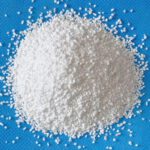Granular Activated Carbons are a very versatile group of adsorbents, with capability for selectively adsorbing thousands of organic, and certain in- organic, materials. From medicinal uses of powdered carbons in ancient Egypt, through charred interiors of whiskey barrels, carbon has been activated and used as an adsorbent for centuries.
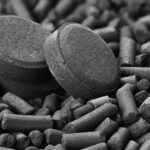
Non Ferric Alum is a purer form of aluminum sulphate. It is used in better grades of paper for loading and sizing purposes. Non Ferric Alum is manufactured from aluminium trihydrate whereas ferric alum uses bauxite as the raw material. The raw material is cooked with sulphuric acid under suitable conditions.
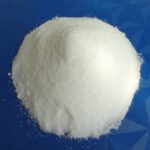
Hydrated lime (calcium hydroxide) is a dry, colorless crystalline powder manufactured by treating calcium oxide (quicklime) with water, in a process called “slaking.” Also known as slack lime, builders lime or pickling lime, hydrated lime is used in the production of mortars, plasters, cements, paints, hard rubber products, petrochemicals, and in the tanning of leather.
A more recent development for hydrated lime use is in environmental applications. Here, hydrated lime, a mild alkali, is used for the removal of acid gases in coal-fired energy plants, cement mills, glassmakers and incinerators.
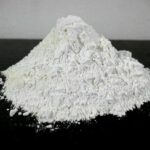
Calcium hypochlorite appears as a white granular solid (or tablets compressed from the granules) with an odor of chlorine. Toxic, irritating to the skin. Noncombustible, but will accelerate the burning of combustible materials. Prolonged exposure to fire or heat may result in the vigorous decomposition of the material and rupture of the container. Diluted samples may undergo reactions as described above if they contain less than 39% available chlorine but take longer to become involved and react less vigorously. Used for water purification, disinfectant for swimming pools, for bleaching paper and textiles.
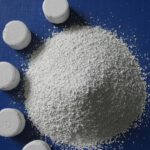
Sodium hypochlorite (NaOCl), commonly referred to as “liquid chlorine” or liquid bleach, is an aqueous solution created by mixing chlorine gas in water with concentrations of sodium hydroxide. This liquid is manufactured at differing trade percentages.
Household bleach for general cleaning purposes and laundry is available in concentrations from 1.5% to 6% sodium hypochlorite, by weight. Sodium hypochlorite for swimming pools is usually manufactured at concentrations of 10% or 12.5%. One gallon of 12.5% sodium hypochlorite provides approximately 12.5 ppm of free chlorine per 10,000 gallons of pool water. It takes 10.6 fl. oz of 12.5% sodium hypochlorite to get roughly 1 ppm of free chlorine in 10,000 gallons of pool water. The pH of pool grade sodium hypochlorite is 13.
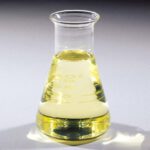
Polyaluminum Chloride (PAC) is one of the most efficient water treatment chemicals utilized today. It is widely used in both potable water and wastewater treatment because it provides high coagulation efficiency and it has the widest pH and temperature application ranges compared to other water treatment chemicals.
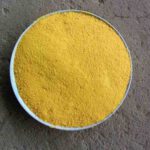
Potassium permanganate is a point-of-entry treatment option for water. It is sold as a dry, purple-tinted solid. It oxidizes dissolved bits of iron, hydrogen sulfide, and manganese so that the solid particles can be easily filtered out of water.
It’s important to note that potassium permanganate is not a good disinfectant. You also don’t want to allow a residual amount of permanganate because it will likely give water a pink tinge that no one wants coming out of their pipes.
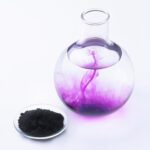
A polyelectrolyte is a polymer of electrolytes with several repeating chain units. Polyelectrolytes have properties of both electrolytes and polymers, and have a high molecular weight. Due to this and the fact that polyelectrolytes are composed of a single type of monomer subunit charge, they are often used to reduce or prevent corrosion on metallic substrate surfaces. They Are Used In Water Treatment And For Oil Recovery, Many Soaps, Shampoos, And Cosmetics Incorporate Poly Electrolytes.
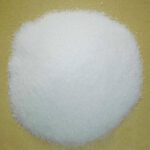
Ferric chloride is an orange to brown-black solid. Ferric chloride, solution appears as a colorless to light brown aqueous solution that has a faint hydrochloric acid odor. Highly corrosive to most metals and probably corrosive to tissue. Noncombustible. Used in sewage treatment and water purification.
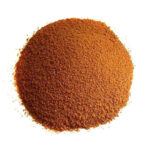
TCCA can be used in water treatment, especially in swimming pool water treatment, drinking water treatment, algae removing of industrial circulating water, treatment of industrial or city sewage, disinfection of petroleum well drilling slurry and sewage and production of seawater cells.
TCCA can be used in dishware disinfection, preventative disinfection of houses, hotels and public places, hygiene and diesel control in hospitals, and environment disinfection in fish, silkworm, livestock and poultry feeding places. TCCA also can be used in fruits and vegetables disinfection and preservation. TCCA can also be used in textile cleansing and bleaching, wool shrink resistance, paper insect resistance, and rubber chlorination, etc.
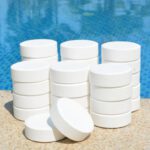
Sodium dichloroisocyanurate is the sodium salt of a chlorinated hydroxytriazine and is used as a source of free available chlorine, in the form of hypochlorous acid, for the disinfection of water. It is widely used as a stable source of chlorine for the disinfection of swimming pools and in the food industry. It is also used as a means of disinfecting drinking-water, primarily in emergencies, when it provides an easy-to-use source of free chlorine, and, more recently, as the form of chlorine for household point-of-use water treatment.
